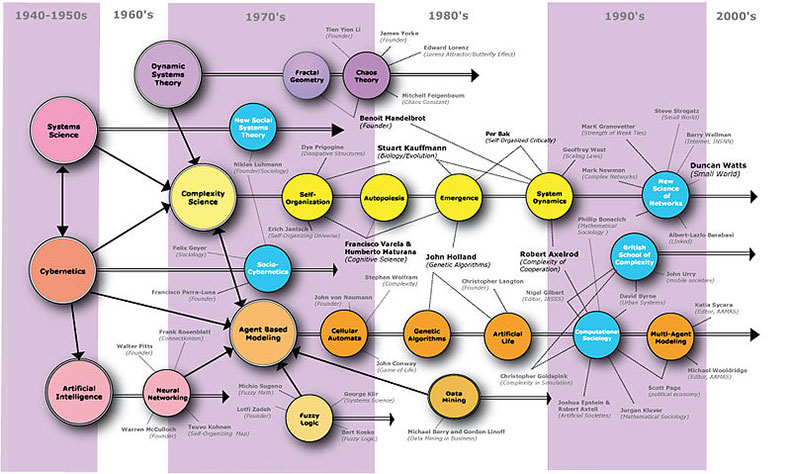Agent-Based Modeling
Table of Contents
Agent-Based Modeling (ABM) is a computational modeling technique used to simulate the actions and interactions of autonomous agents within a complex system.
These agents can represent individuals, groups, or organizations, each with their own set of rules, behaviors, and decision-making processes.
ABM is widely used in various fields such as economics, biology, sociology, and computer science to study and understand the emergent behavior of complex systems.
What is Agent-Based Modeling?
Agent-Based Modeling is based on the concept of emergence, which refers to the phenomenon where complex systems exhibit properties and behaviors that cannot be explained by the individual components alone.
In ABM, agents are programmed to interact with each other and their environment according to predefined rules and behaviors.
Through these interactions, emergent patterns and phenomena can arise, providing insights into the underlying dynamics of the system.
Components of Agent-Based Modeling
1. Agents: Agents are the fundamental building blocks of ABM. They can represent individuals, groups, or entities within the system, each with its own set of characteristics, behaviors, and decision-making processes. Agents can interact with each other and their environment, leading to the emergence of complex behaviors and patterns.
2. Environment: The environment in ABM refers to the space in which agents operate and interact. It can be physical, such as a geographical area, or virtual, such as a network or social media platform. The environment influences the behavior and interactions of agents, shaping the emergent properties of the system.
3. Rules and Behaviors: Agents in ABM are programmed with rules and behaviors that govern their interactions with other agents and the environment. These rules can be simple, such as moving towards a target or avoiding obstacles, or complex, such as decision-making processes based on information and preferences. By defining the rules and behaviors of agents, researchers can study the dynamics of the system and predict its future behavior.
Applications of Agent-Based Modeling
Agent-Based Modeling is a powerful tool for studying and understanding complex systems in various fields.
Some common applications of ABM include:
1. Economics: ABM is used to simulate the behavior of economic agents such as consumers, firms, and governments in markets and economies. By modeling the interactions between these agents, researchers can study the emergence of market dynamics, price fluctuations, and economic trends.
2. Biology: ABM is used to study biological systems such as ecosystems, cells, and organisms. By simulating the interactions between agents representing different species or cells, researchers can model the dynamics of population growth, disease spread, and ecosystem stability.
3. Sociology: ABM is used to study social systems such as communities, organizations, and networks. By modeling the interactions between agents representing individuals or groups, researchers can study social phenomena such as opinion formation, social influence, and collective behavior.
Advantages of Agent-Based Modeling
Agent-Based Modeling offers several advantages over traditional modeling techniques, including:
1. Flexibility: ABM allows researchers to model complex systems with multiple interacting agents, each with its own set of rules and behaviors. This flexibility enables the simulation of a wide range of phenomena and the exploration of alternative scenarios.
2. Emergence: ABM captures the emergent properties and behaviors of complex systems, which cannot be predicted by analyzing the individual components alone. By simulating the interactions between agents, researchers can study how macro-level patterns and phenomena emerge from micro-level interactions.
3. Realism: ABM can capture the heterogeneity and diversity of agents within a system, allowing for the representation of individual differences, preferences, and behaviors. This realism enables researchers to study complex systems in a more realistic and nuanced way.
Challenges of Agent-Based Modeling
While Agent-Based Modeling offers many advantages, it also poses several challenges, including:
1. Complexity: ABM can become computationally intensive and complex as the number of agents and interactions increases. Managing and analyzing large-scale ABM simulations can be challenging, requiring advanced computational resources and modeling techniques.
2. Validation: Validating ABM simulations can be difficult, as the emergent properties and behaviors of complex systems may not always align with real-world observations. Ensuring that ABM models are accurate and reliable requires careful calibration and validation against empirical data.
3. Interpretation: Interpreting the results of ABM simulations can be challenging, as emergent patterns and phenomena may be difficult to understand and explain. Researchers must carefully analyze and interpret the outputs of ABM simulations to draw meaningful insights and conclusions.
Final Thoughts

Agent-Based Modeling is a powerful tool for studying and understanding complex systems in various fields.
By simulating the interactions between autonomous agents within a system, researchers can study the emergent properties and behaviors that arise from these interactions.
ABM offers flexibility, realism, and the ability to capture emergent phenomena, making it a valuable tool for exploring and predicting the dynamics of complex systems.
However, challenges such as complexity, validation, and interpretation must be carefully addressed to ensure the accuracy and reliability of ABM simulations.
Overall, Agent-Based Modeling provides a valuable framework for studying the complexities of the world around us and gaining insights into the underlying dynamics of complex systems.
Image credit:
Wikipedia | License details

